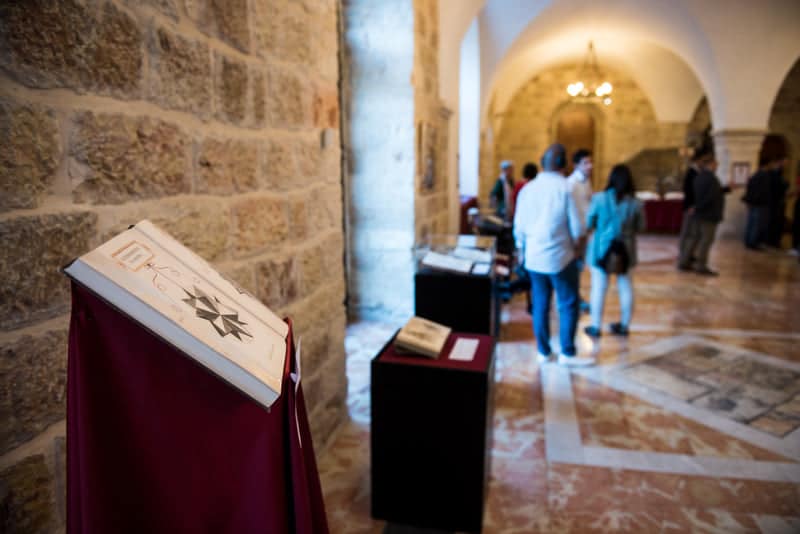
Jerusalem: Leonardo Da Vinci and the Franciscans. An exhibition of the Library of the Custody for the scientist’s 500 years
The precious reproduction of a text by a mathematical monk of the late fifteenth century (de Divina proportione) is among the many volumes present in the exhibition dedicated to Leonardo da Vinci in the premises of the Franciscan Custodial Curia. It is a volume by Fra Luca Pacioli (1455-1517), a collaborator of Leonardo Da Vinci who assisted the Tuscan genius in his research by sharing his great knowledge in mathematics and letters. In the inaugural speech of the annual book show opening the academic year of the Studium Biblicum Franciscanum, the director of the Library, Brother Lionel Goh, recalls: “With his knowledge of Greek and Latin, Pacioli greatly helped Leonardo, who could not read any of these two ancient languages: this to underline that there is a very strong link between the figure of the Italian scientist and the Franciscans “.
This strong link between science and the Franciscan tradition is the theme of the book exhibition which consists of about thirty volumes dated between the 15th and 17th centuries, open to visitors from Monday 4 to Friday 8 November. The exhibition, born on the occasion of the five hundredth anniversary of the death of Leonardo da Vinci, starts from the knowledge of the eclectic artist-scientist to show Renaissance knowledge and more. “The opening of the Franciscan world to all the sciences”, the Custos of the Holy Land, Fr. Francesco Patton, commented during the inauguration. “In Franciscan spirituality the whole world speaks of God, and this is also the underlying reason why there is a positive approach to all that has been created and a positive approach to the same sciences”.
In the review there are books dealing with geography, architecture, botany, geometry, mathematics, astronomy such as the precious incunabulum (a book printed between the late 1400s and 1500s) by Giovanni da Sacrobosco, author of a fundamental text of medieval cosmology. The volumes can be consulted in the online and paper catalog, financed by the Association pro Terra Sancta, which sees the introduction of prestigious signatures such as that of the Consul General of Italy in Jerusalem Fabio Sokolowicz and the premise signed by Stephen Parkin, expert of the printed collection of volumes from 1450-1600 of the British Library of London.
The drawing up of the catalog constitutes the final elaboration of the first specialized training course “p. Augustìn Arce “on the cataloging of the ancient book held by Professor Edoardo Barbieri in July at the Library of the Custody of the Holy Land. Some students of the Catholic University of Milan then passed the baton to their other peers and colleagues who are in these in Jerusalem to guide and illustrate the exhibition to the many visitors who come to the Custody. “This is a work of synergy and great collaboration between students,” says Professor Edoardo Barbieri, who for ten years has continued this collaboration between the Catholic University of Milan, the CRELEB (European Research Center Book Publishing Library) and the Franciscan Library. This project was created to protect a precious and ancient asset that is the book heritage of the Franciscans, but it has an important social implication both for the boys and for the local reality: “For boys it becomes a huge experience: they experience a job, they put hands in dough. The university is seen by the students as very theoretical, coming here they try to put their knowledge into practice seeing a practical implication, “says Barbieri.
The other aspect is linked to intercultural and interreligious dialogue: “During the exhibitions it is the moment when the name of the project ‘Books of peace bridges’ becomes real” underlines Davide Martini, PhD student in Humanities at the Catholic University: “The will is to create a bridge of dialogue: dialogue between different cultures, religions, societies and individuals. The goal is to create a peaceful society that revolves around culture and scientific and humanistic knowledge. “